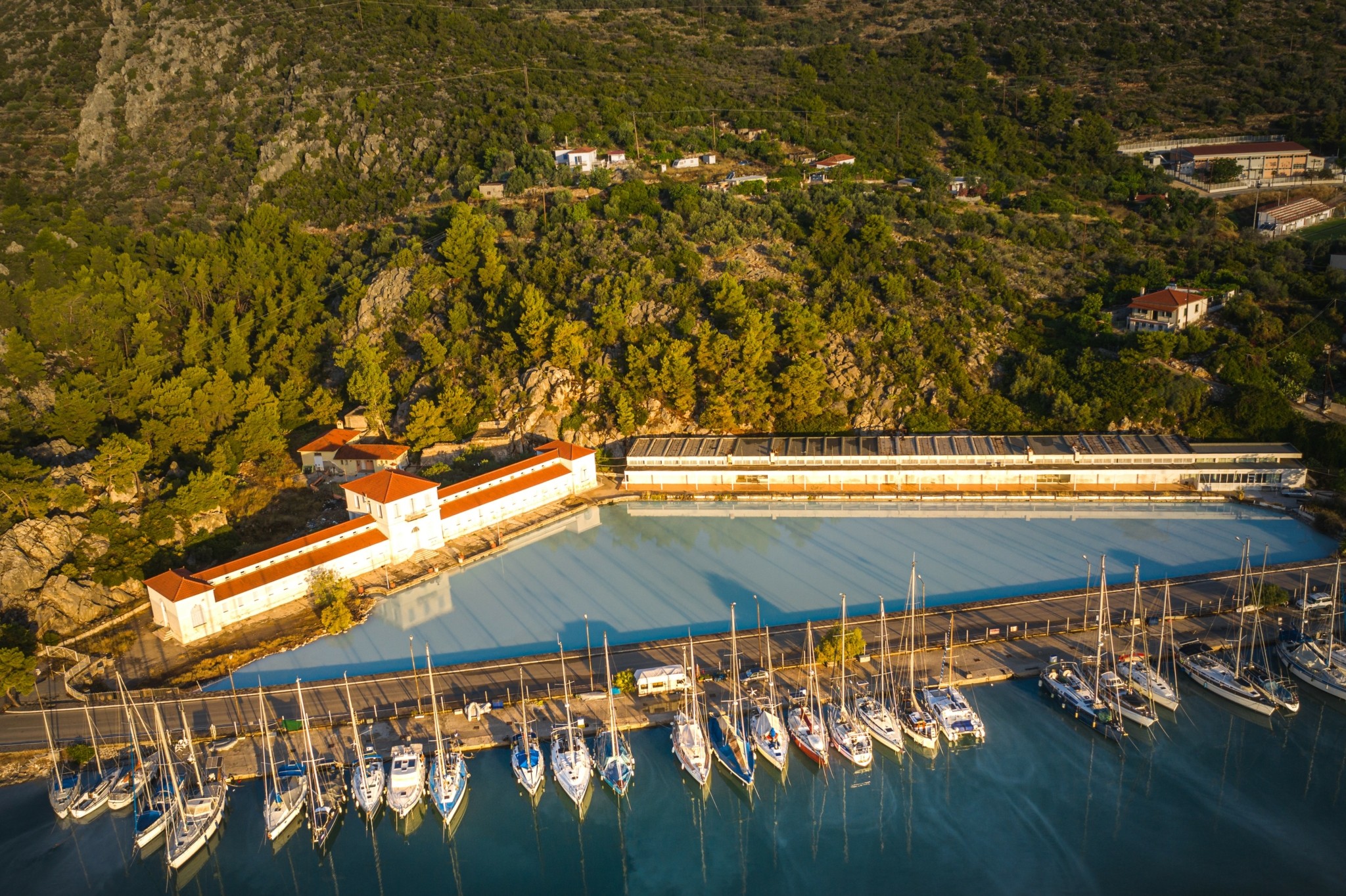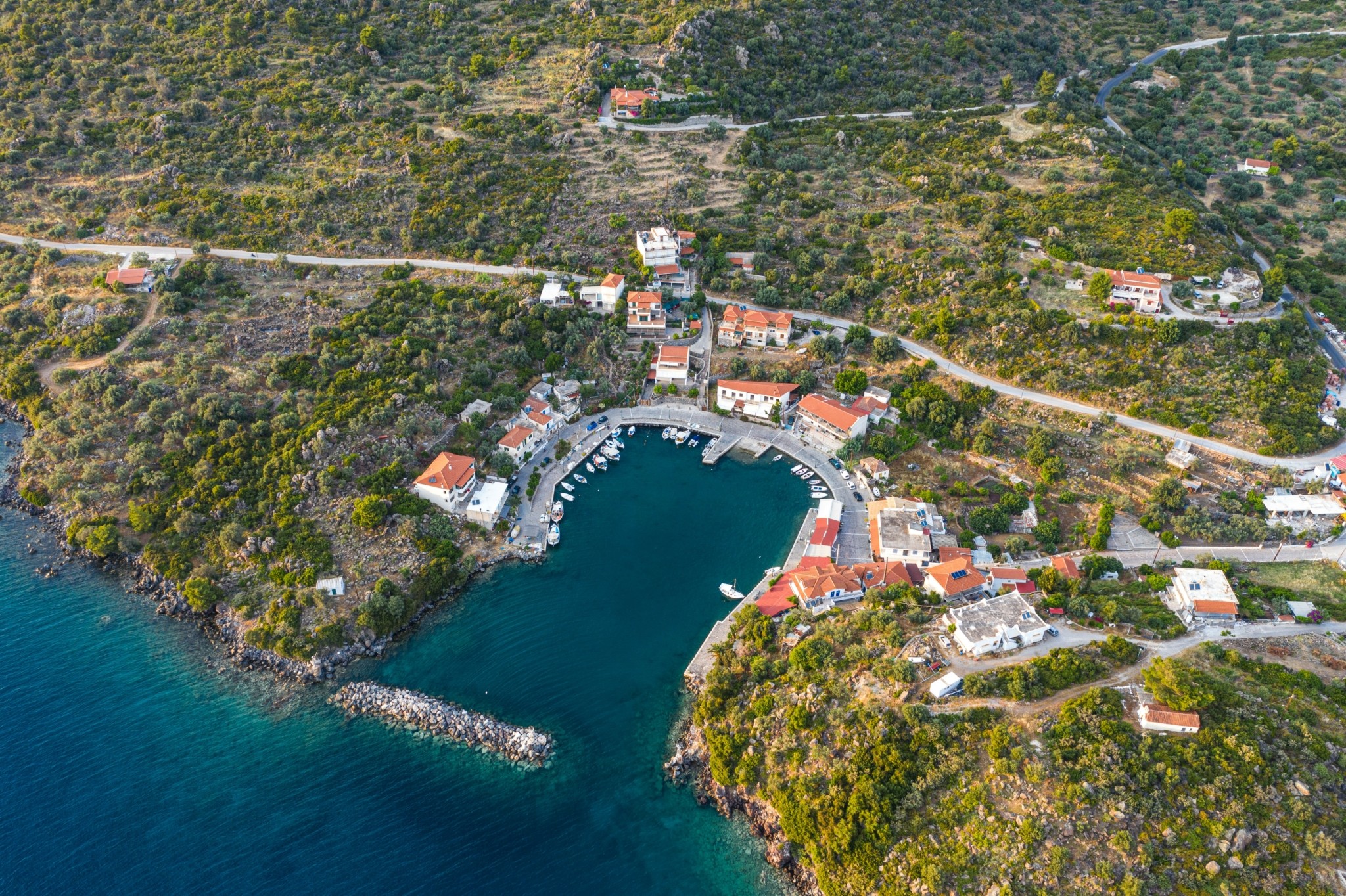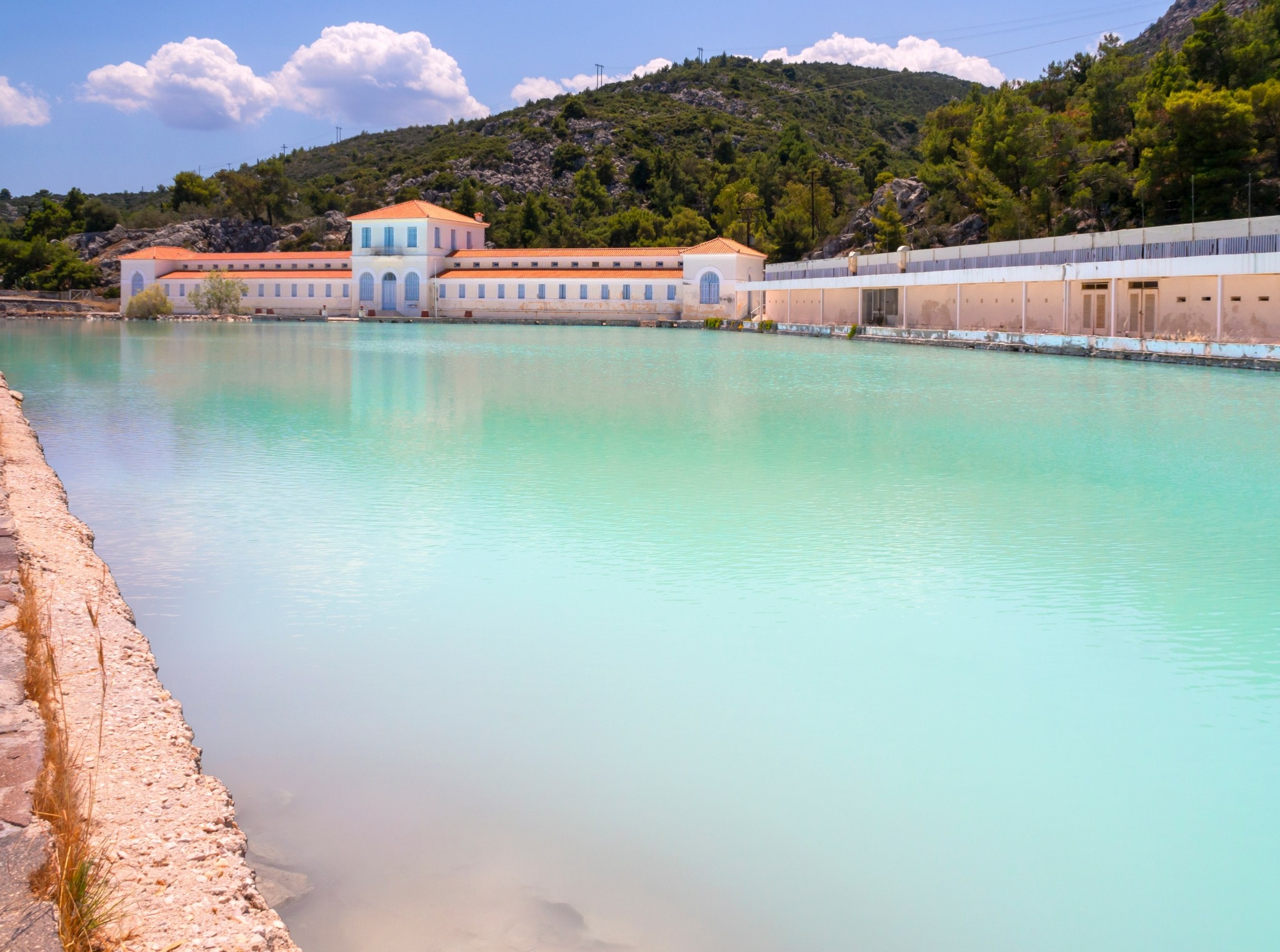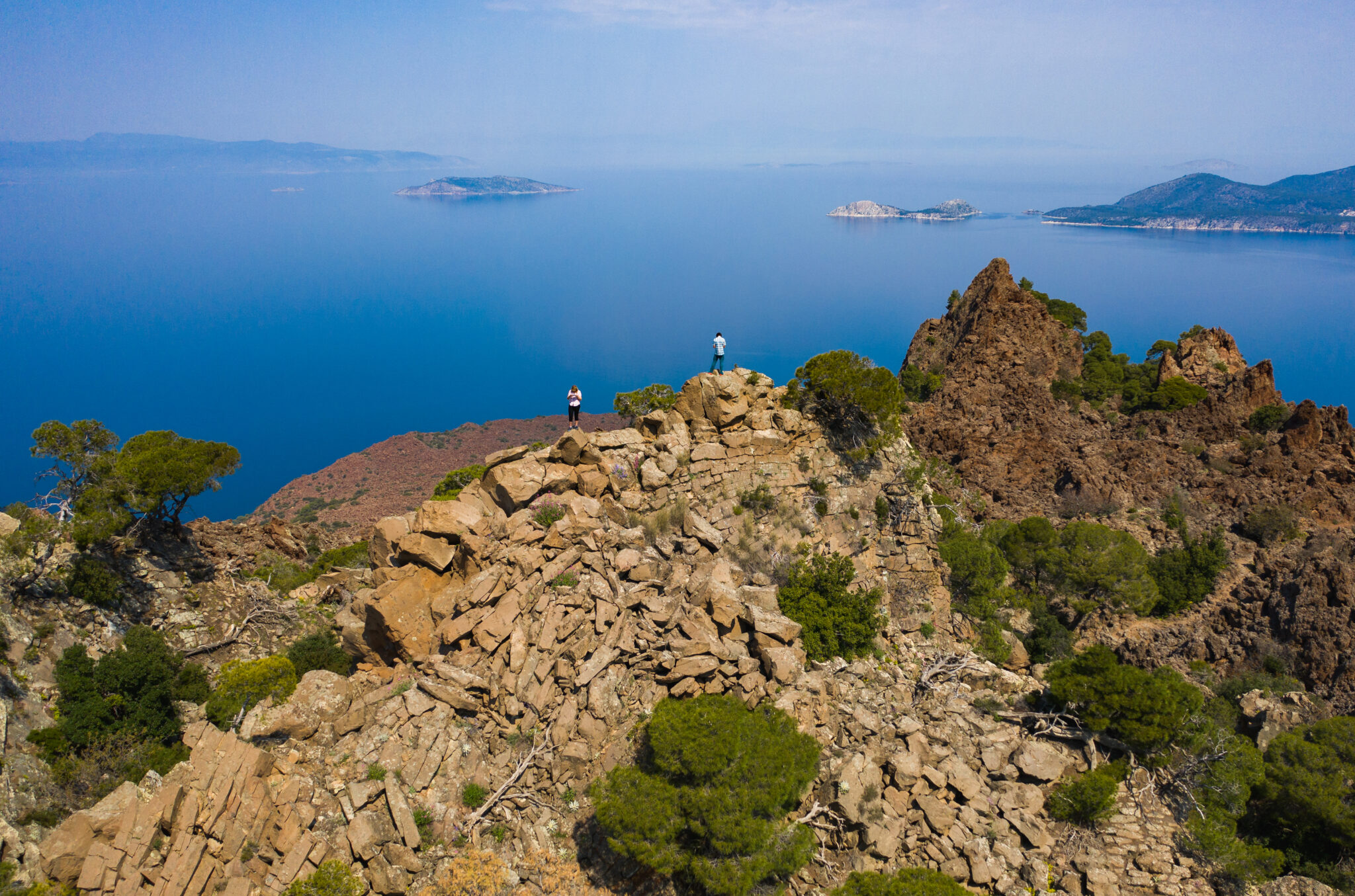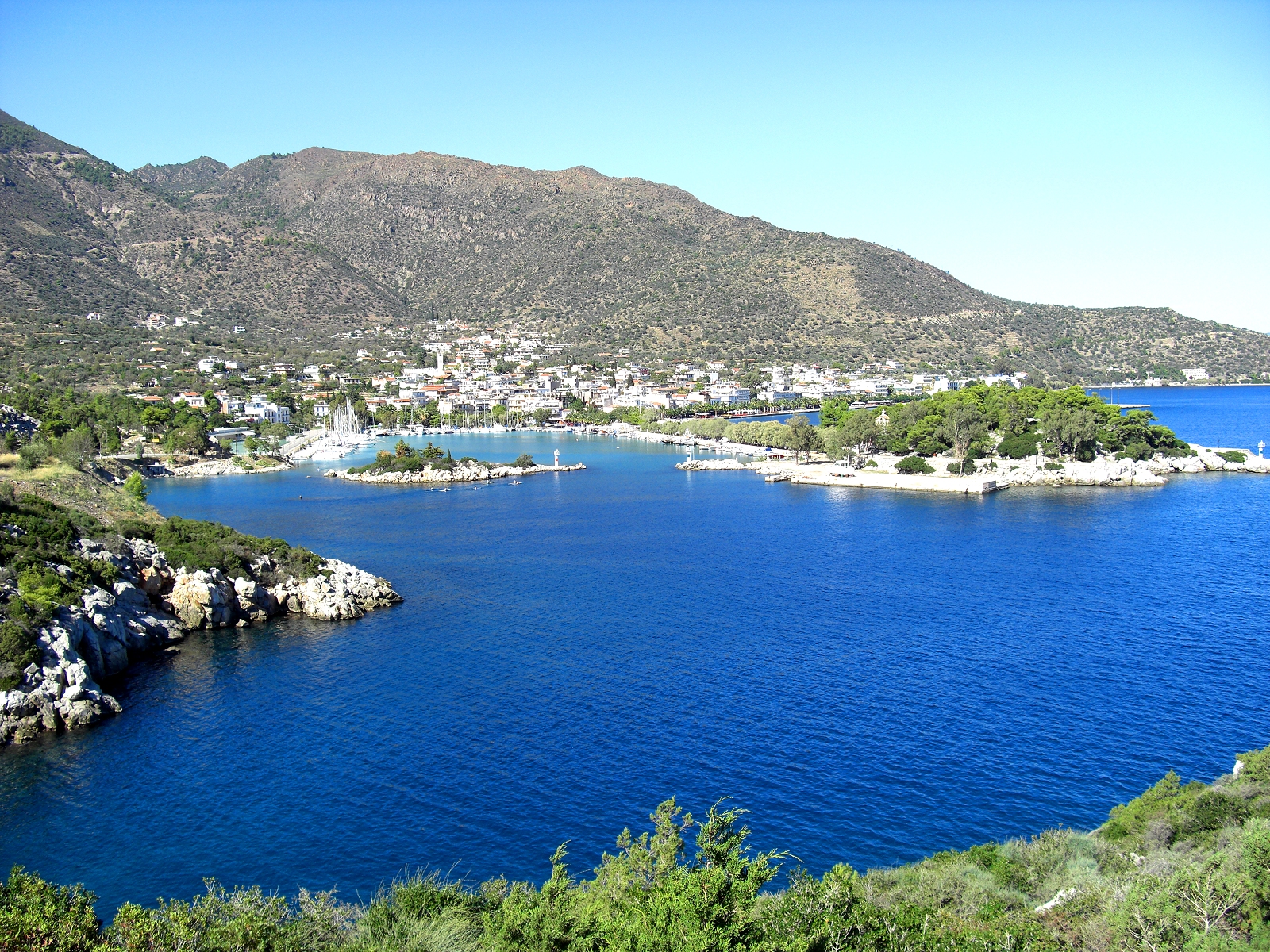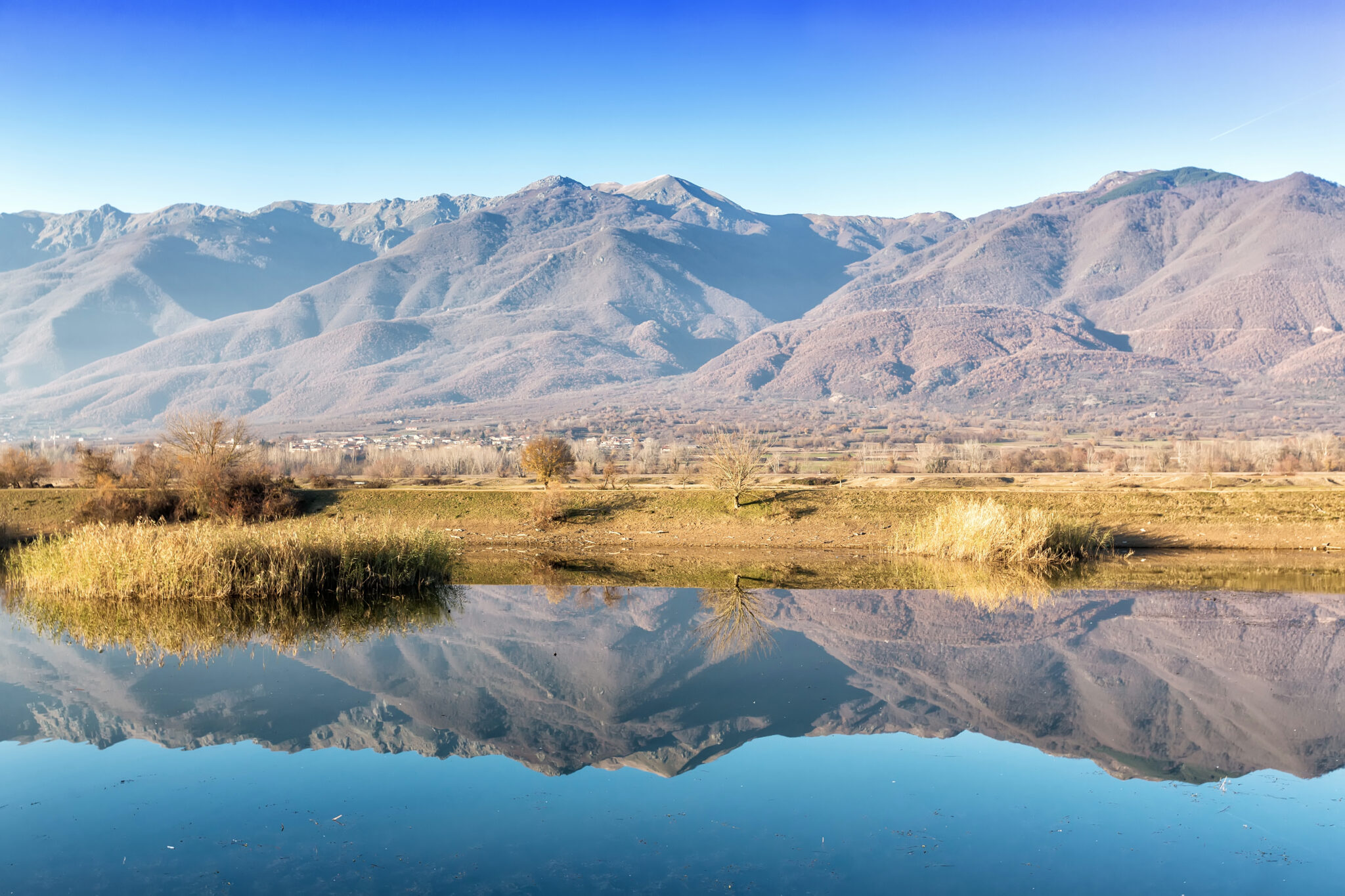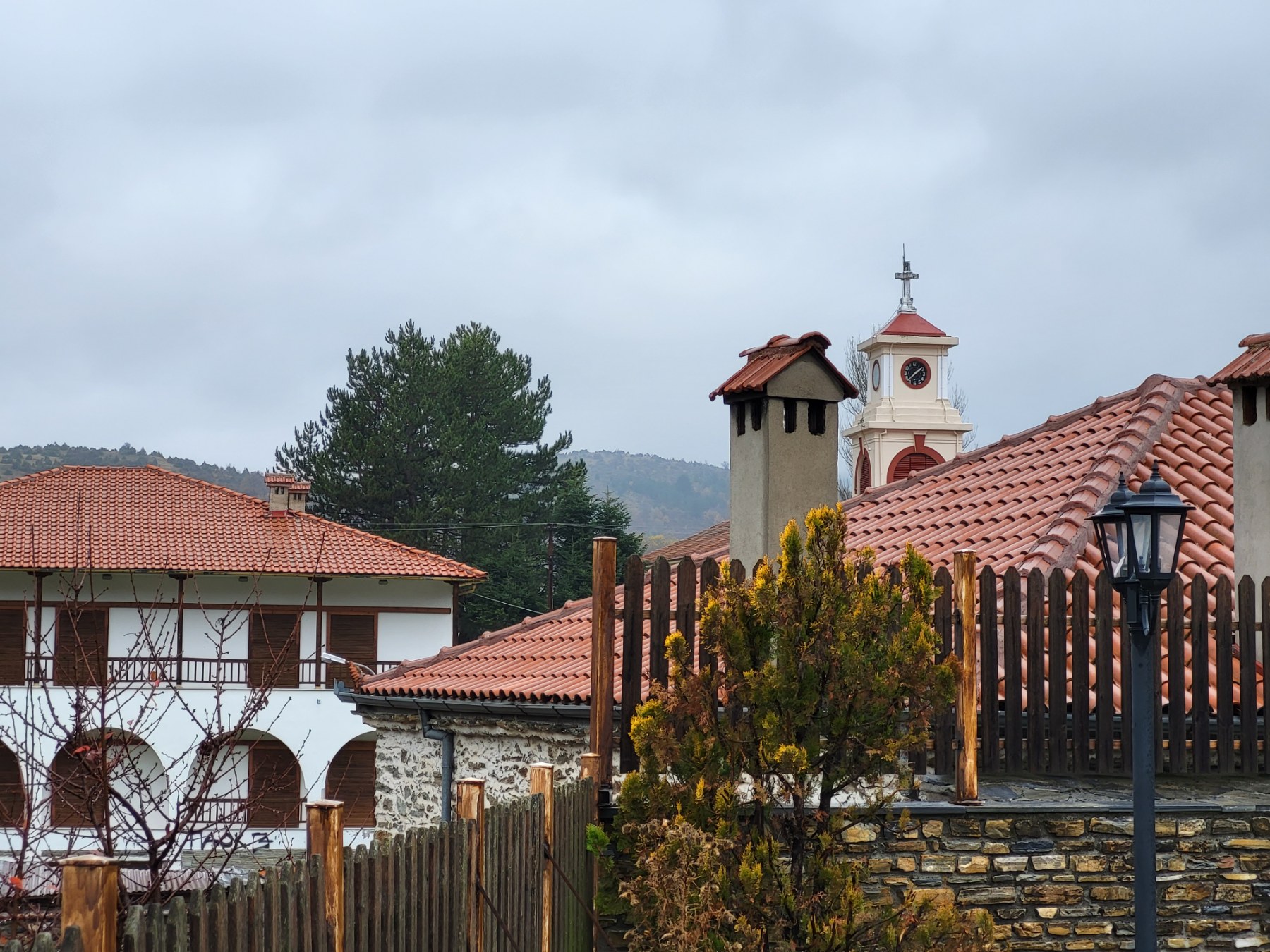The modest peninsula of Methana is ideal for idle weekends and tranquil holidays in a unique natural landscape, a draw in both winter and summer.
You can reach Methana either by boat, there are regular ferries from the port of Piraeus (2hrs €12), or by road via the National Road Athens – Corinth and then via Epidaurus. This ‘almost’ island – attached to the Peloponnese by a mere slither of land – does have the feel of a proper island
A little history and geography
Methana has been inhabited since prehistoric times and originally belonged to Troezen (Troizina), but in 425 BC it was given to the Athenians. The area is known for its beautiful beaches, thermal springs and its volcano which belongs to the volcanic arc of the southern Aegean that stretches past Santorini and onto Nisyros.
The volcano is on the western part of the peninsula and the historical record tells us that it was particularly active between 276 and 239 BC. To date, thirty craters have been counted in the area of Methana, the most famous of which is near the village of Kaimeni Hora, which is about 50 metres deep, 100 metres in diameter 425 metres high.
Let’s start at the Acropolis near Vathi, on Paleokastro hill. According to findings, the area was inhabited from the Neolithic period (C. 5,000 BC), while the ruins of the city that survive today belong to the 4th to 3rd century BC. Below the hill, under the seawater, you’ll be able to spot the sunken ruins of ancient buildings and the pier of the ancient port. From the Acropolis looking up you can observe the ruins of an early Christian church and the 11th century chapel of Agios Nikolaos.
There are plenty more amazing archaeological sites in the area. Namely, on the Throni plateau, above Megalohori, where you’ll see the largest land crater of the thirty of the Methana volcano. In the area, there is also a 4th century BC tower and ruins of a 3rd century BC oil mill. In the valley of Stavrologos, located in the centre of the peninsula, you’ll come across one of the oldest volcanic craters and an ancient tower also dating back to the 4th century BC. In addition, in the area of Agios Nikolaos there are ancient baths and remains of a Roman cistern, while on the beach of Kypseli you can visit the ruins of a fortress from the classical period (5th century BC), which encloses the remains of the ancient temple of Poseidon.
Located in the narrow strip of land that connects Methana with the Peloponnese, at a height of 80m, is the castle of Fabvier a 19th century castle that features four small towers on its corners. It was built by the French general Nicolas Fabvier over the ruins of a 5th century BC fortification erected during the Peloponnesian War by the Athenian general Nikias. General Fabvier was the commander who organized and led the first Greek tactical army unit and it is to him that the village of Taktikopolis opposite Methana owes its name.
Methana, as a result of volcanic activity, has a surfeit of sulfurous thermal springs. The Ancient historian Pausanias mentions the hot springs of Methana as early as the 3rd century BC. On most of Methana the thermal waters are rich in precious minerals and temperatures exceed 30 °C (87 °F), welcoming for most even in winter. You will find hot springs on the coast in front of Methana town (25 here which spill into Vromolimni) and on the northern side of the peninsula, in Agios Nikolaos.
The lush green yet volcanic landscape of Methana boasts beautiful hiking trails along which you will encounter volcanic craters and ancient ruins scattered all over the peninsula. Lovely little villages, tiny chapels and vantages with enticing vistas of sea and mountains. One of the most interesting trails begins at Megalohori and leads up to the Byzantine chapel of Panagitsa, 550m above sea level. It passes by the now uninhabited hamlet of the same name and then rises to the highest peak of Methana, Helona (740m), where round and rectangular cisterns, probably from the Byzantine era, can be seen. The view from the top is panoramic, extending around from the Peloponnese to Aegina and Attica to the open Aegean sea. Among the most famous hikes is to the volcanic crater near the village of Kaimeni Hora, around 4,5km away from Vathi. The trail passes by jet-black volcanic bulks, pine trees and kermes (an oak of the genus Quercus coccifera).. The views from here are truly unique.
A lovely, relaxing stroll can be had to and around the little peninsula of Agioi Anargyroi, located right next to the port. The tiny peninsula is particularly verdurous and has benches overlooking the lapis and azure hues of the Saronic Gulf.
Solitary swimming in the Dodecanese islands; 12 secluded, covid-free beaches
More than Pistachios: Aegina’s Wholesome Culinary Identity



